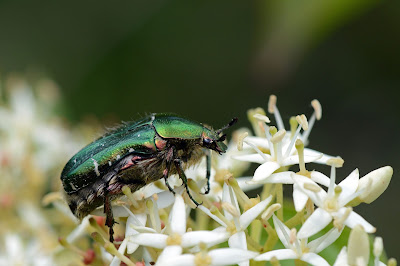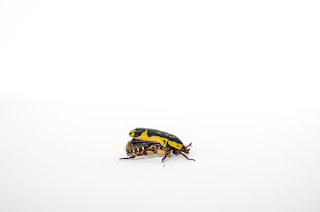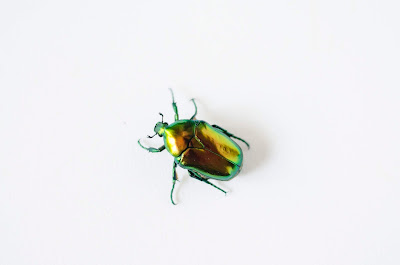Little research and opinion: On beetle pricing
Background and aims
In the years that I've been breeding beetles I saw a lot of variation in the pricing of them. Since May-June 2018 I have witnessed a big spike in pricing. Most companies turned their prices higher but especially in the hobby scene I've seen the pricing on many beetles getting higher every month to (in my opinion) sometimes outrageous prices.
Some examples:
Megalorrhina harissi L1-L2 ==> 15 euro a larva
Megasoma acteaon L1 ==> 20 euro a larva
Wild Dorcus titanus castanicolor, big pairs: 220 euro a pair
Of course the price of anything (beetles included) is very complex. In beetles for example genetics, coloration, size, demand/offer, image of the breeder, the greed of the breeder,... all have influence on the price of larvae. Also since beetlebreeding is an international hobby, prices vary from country to country.
Still it seems to me that there is a general standard when it comes to pricing. I think that doesn't only depend on what people ask for their beetles, but is for an important part influenced by how we value a certain beetle. In my opinion most breeders have some idea about what is a correct price for a certain species in a certain context. We use these values to evaluate how the marketprice is (high, low or normal to what for us is the correct price). That is what I like to call the subjective value or perceived value of certain species.
Since the prices of beetles are going up like it's nothing, I wanted to investigate this topic. I wanted to learn what we think is the correct price, the subjective value, for a certain beetle.
Methods and limitations of the method
I made up a short online questionnaire to investigate how people value a certain beetle at a certain stage. The questions focused on some flagship species of the three most commonly bred families (Cetoniidae, Lucanidae and Dynastidae). Furthermore some basics about stage, size and genetics were added.
The result was a short survey of 9 questions, which will be listed in the results section. These 9 questions are just to give an aim on what people think is a correct price. I am very aware that the factors I included in the questions are not enough to truly assess the value. Should I have included all factors for different species we'll end up with a questionnaire of over 150 questions, and the chances of people not completing it would be very high, and the results of the big questionnaire invalid.
Another problem is that I didn't question from what country people came, and prices can differ a lot based and location and currency exchange rates.
The questionnaire was distributed in 5 european-dominated beetlegroups on Facebook.
The spreading of the questionaire also caused a lot of discussion in the groups, with 9 people contacting me in private message to discuss the topic. I tried to also fit in these findings into the discussion section.
Results:
I collected 57 filled in questionnaires. The data were checked en cleared for outliers and missing values. Here I sum up the questions, each with a mean price, a mean deviation and a median. Don't know what these terms can tell us? Use Wikipedia ;).
I order the questions per beetle family
Dynastidae:
What is the correct price for an L1, Megasoma elephas elephas, CBF1?:
Mean: 8.8 euro SD: 2.1 euro Median: 10 euro
What is the correct price for an adult pair Megasoma elephas elephas, male 90mm, CBF1?:
Mean: 99 euro SD: 21.8 euro Median: 100 euro
What is the correct price for an adult pair Dynastes hercules hercules, male 130mm, unknown genetics?:
Mean: 120 euro SD:43 euro Median: 130 euro
Lucanidae:
What is the correct price for an L1, Cyclommatus metallifer finae, CBF1?:
Mean: 6.8 euro SD: 1.8 euro Median: 7 euro
What is the correct price for an adult pair Cyclommatus metallifer finae, male 65mm, CBF1?:
Mean: 60 euro SD: 18 euro Median: 50 euro
What is the correct price for an adult pair Phalacrognathus muelleri, male 55mm, unknown genetics?:
Mean: 43.4 euro SD: 6.7 euro Median: 45 euro
Cetoniidae:
What is the correct price for an L1, Mecynorhina torquata ugandesis, CBF1?:
Mean: 4 euro SD: 1.7 euro Median: 3.5 euro
What is the correct price for an adult pair Mecynorrhina torquata ugandensis, male 70mm, CBF1?:
Mean: 39.5 euro SD: 9 euro Median: 40 euro
What is the correct price for an adult pair Eudicella gralli, unknown genetics?:
Mean: 17.2 euro SD:4.5 euro Median: 18 euro
Discussion:
First of all I want to point out again that this questionnaire does not include all parameters to assess the value of a beetle, so all conclusions are preliminary. But we can use these data to give aim for further research and to use them for what they're worth.
On Dynastidae:
First of all it is well established that most Dynastidae are more expensive compared to the other families. Their cycle takes much longer to complete, and many species need quality substrate to become a large adult. This is also seen in the result of this questionnaire with a tiny Megasoma elephas larva being valued at about 10euro a piece. The variation for the perceived value of a larvae is quite narrow, showing that the standard price for such a larva has a good agreement among breeders. Adult pairs of both Megasoma elephas and Dynastes hercules are mostly valued over a 100 euro. For the adult beetles we also see a very large standard deviation of the mean. This learns us that that answers to what the adult pairs are worth is very heterogenous. Why is this?
The current rising of prices, the influence of expensive Japanese imports or the lack of detailed questions in my questionnaire might be the answer for this, but this questionnaire doesn't give us a clue as to what might be a factor in this.
Then in personal discussions and on the facebook-groups there was a discussion on the price of Dynastidae. Is it fair that prices for them are high compared to other species?
Ofcourse there's the time it takes to raise the beetles and substrates they need. But on the otherside females of Dynastes hercules ssp en most Megasoma sp can very easily lay 70 eggs, some even producing over 130 eggs for a single female. With this kind of reproduction it would be likely that prices would lower because of disbalance in demand and offer. But this ,even over the years I've been breeding, doesn't seem to happen. With other captive-bred insects like Phasmatidae this does actually happen, even with rarities. In the online discussions some people said that they simply won't sell under a certain price, not under what is their subjective value for a certain species.
It would be interesting to see more research happening on what makes rhinoceros beetles more expensive than other species, although they reproduce more compared to most other beetle families in breeding.
On Lucanidae:
For the larvae of Cyclommatus metallifer the variation in answers tend to be small. The same goes for adult pairs of Phalacrognathus muelleri. This maybe shows that the prices for these commonly bred Lucanidae is more agreed upon in the breeding scene. For the adult pair of Cyclommatus metallifer finae the variation was very big, showing less agreement for their subjective value.
Ofcourse in Lucanidae there is the big race for length. It would be interesting for a next questionnaire to add different lengths for the same species, to see what this does to the perceived value of a beetle.
With lucanidae the price is more balanced compared to the reproductive rates of females. Because of lower reproductive rates in Lucanidae it is somewhat logic that the price of the larvae stays at about the same level. The market doesn't easily get flooded with Lucanidae larvae (at least in Europe).
On Cetoniidae:
For Cetoniidae the variations were the lowest, showing that the subjective value for the questioned species were about the same for most participants. We see that most of the participants value a pair of MTU at about 40 euro, and an L1 larvae at about 4 euro.
In my personal experience I see MTU selling mostly at about the same price at fairs in the years i've been breeding. MTU is a very popular species of which the market is almost always saturated. People selling their larvae at a higher price will most likely have a hard time selling them.
Same for Cetoniidae as for Lucanidae it would be interesting to research what the effect of colouration and length is on the perceived value of a beetle.
 |
| Mecynorhina torquata ugandensis male |
The perceived value of larvae tended to be more agreed upon compared to those of adults. The biggest disagreement was found in adults of the family Dynsatidae and for adult pairs of Cyclommatus metallifer finae. For some of the investigated Lucanidae and all Cetoniidae the variation in estimated value was smaller, and thus more agreed upon.
The findings of this small questionnaire are ofcourse preliminary. More research will have to be performed and repeated should we want to make a genuine estimation of the mean subjective value of different species. This research should try to adress more factors that might influence the perceived value of a beetle.
For further research better questionnaires can be made by using only one or two species per questionnaire but adding more details about the background and characteristics of the species involved. To be continued!
I hope this preliminary findings can help guide both seller and buyer for estimating a correct price for their stock or soon-to-be stock.




Comments